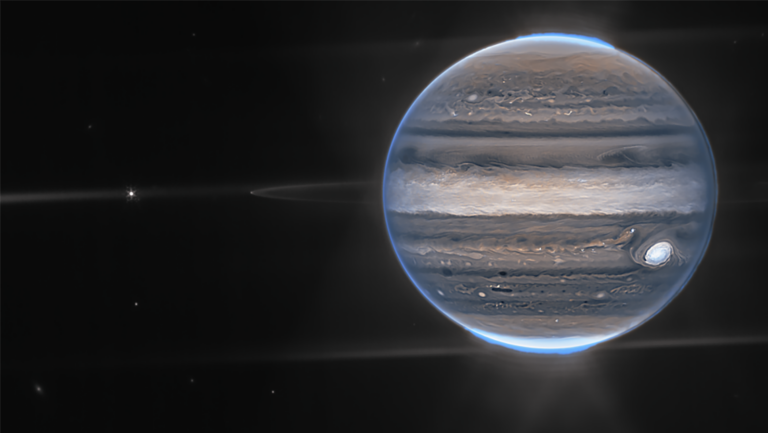Stay Up to Date
Submit your email address to receive the latest industry and Aerospace America news.
The Space Exploration Integration Committee brings together experts on topics relevant to future human and robotic exploration missions.
After a series of orbit raising maneuvers, the James Webb Space Telescope, a joint effort of NASA, the European Space Agency and the Canadian Space Agency, reached its destination orbit around the L2 Lagrange Point in January. The Webb telescope was launched on December 25, 2021, aboard an Ariane 5 rocket from Europe’s French Guiana Spaceport and traveled over a million miles. Upon its arrival, Webb performed a sequence of commissioning operations, including unfurling a tennis court-sized sunshade, unfolding and precisely aligning its 18-segment primary mirror, and powering on, cooling and calibrating an array of powerful science instruments.
In July, U.S. President Joe Biden released the first of a series of full-color images taken by Webb, saying, “We can see possibilities no one has ever seen before. We can go places no one has ever gone before.” The telescope detected the faintest objects ever observed and produced the deepest, sharpest infrared images seen so far of objects in the distant universe. Closer to home, it has provided infrared spectroscopy of Mars, Jupiter and Uranus — data processed by research scientists into composite images for dissemination and astronomy research. Webb succeeds the Hubble and Spitzer space telescopes as the world’s largest, most powerful space telescope, capable of seeing deeper into space and further back in time to the first light from galaxies in the early universe and of providing greater detail of our solar system.
In September, NASA’s Parker Solar Probe completed its 13th closest approach perihelion at 8.5 million kilometers from the sun’s center since entering its solar science orbit last year. With the sun’s highly energetic solar activity cycle this year, the Wide-Field Imager for Parker Solar Probe imaged several coronal mass ejections, enabling new discoveries about these solar structures. Parker’s observations of solar physics inform our predictions of space weather, which impacts electric grids, communications, navigation systems and the safety of space systems.
NASA in June completed its campaign of prelaunch flight tests and checkouts of the first Space Launch System rocket and Orion spacecraft in preparation for the Artemis I mission, the first in a series of missions to return humans to the moon. Tests of the flight termination system were among the last major activities to be completed prior to closing out the rocket. Teams replaced seals, rings and helium valves in SLS’s propulsion stages after the discovery of hydrogen leaks before, during and after the wet dress rehearsal in June. The leaks prompted late-stage inspections, and an engine conditioning problem coupled with another hydrogen leak detection beset SLS’s initial launch date, postponing August and early September launch attempts and triggering exhaustive seal checks. NASA launched SLS in November, sending the unoccupied Orion to a high lunar orbit. The capsule will use a lunar gravity assist to return to the Earth, and is scheduled to splash down in the Pacific Ocean in December.
In April, Swiss and U.K. companies collaborated to deliver the first engineering test units of the NaviMoon satnav receiver for integration testing on ESA’s Lunar Pathfinder spacecraft. Lunar Pathfinder will provide commercial communication relay service between Earth and lunar orbiters or surface assets. It will also provide lunar navigation services that will rely on the NaviMoon receiver to pick up faint satnav signals from GPS and Europe’s Galileo constellation of Earth-based satnav signals, radio ranging signals on Lunar Pathfinder’s X-band transmitters and laser-ranging devices provided by NASA. Fusing these signals will produce a lunar positioning navigation fix to an accuracy of less than 100 meters. Pathfinder is scheduled to launch in 2025.
Stay Up to Date
Submit your email address to receive the latest industry and Aerospace America news.




